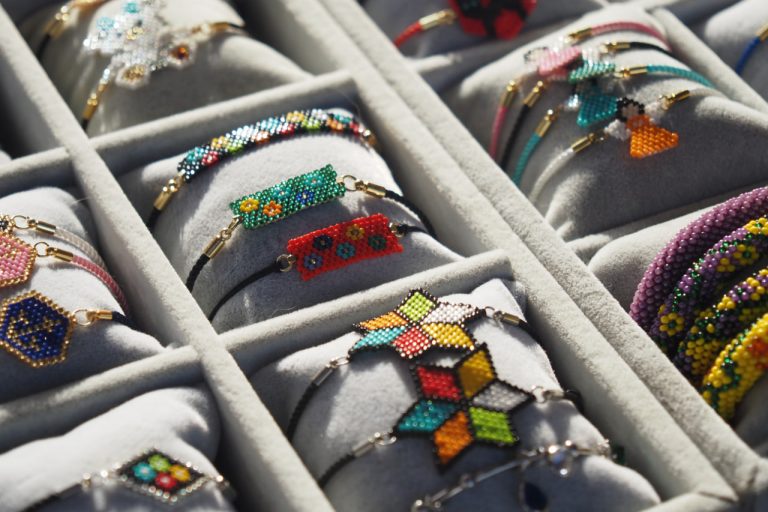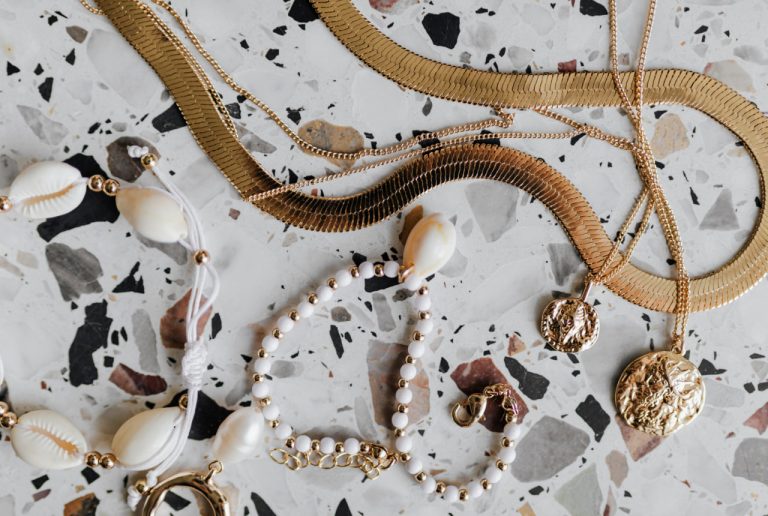Mosaic art is one of humanity’s oldest and most enduring decorative traditions. Its roots stretch back thousands of years, across cultures and continents, carrying with it stories of spiritual belief, imperial ambition, domestic beauty, and artistic innovation. From grand floors of ancient palaces to tiny pendants worn today, the mosaic has evolved not only in form but also in purpose. The transformation of this architectural and monumental art into delicate jewelry tells a fascinating tale of creativity, symbolism, and craftsmanship.
Ancient Beginnings: The First Mosaics
The earliest known mosaics appeared in Mesopotamia around 3000 BCE, made from pieces of colored stones, ivory, and shells embedded into clay walls. These early forms were rudimentary but decorative, often geometric and simple in form. By the 8th century BCE, the Greeks began developing more sophisticated techniques, using pebbles arranged in patterns to decorate floors.
It was during the Hellenistic period that mosaics truly began to evolve into a detailed narrative form. Artists used tiny, hand-cut pieces of stone and glass called tesserae to depict complex scenes, including mythological stories, animals, and portraits. These mosaics weren’t just artistic—they were a symbol of wealth and culture.
The Roman Empire and the Golden Age of Mosaic
The Romans adopted and perfected Greek mosaic techniques, spreading them across the vast territories of the empire. Intricate mosaic floors adorned villas, public baths, and temples. With innovations in colored glass and a growing demand for realism, Roman artists pushed the limits of tesserae work. The mosaics of Pompeii and Herculaneum, preserved by volcanic ash, still display remarkable detail and color.
Roman mosaics were more than decoration. They conveyed power, religious belief, and social status. Often used to glorify emperors or gods, mosaics functioned as both art and propaganda.
Byzantine Brilliance and Sacred Expression
The Byzantine Empire marked a significant turning point in the history of mosaic art. Artists moved from floor to wall, creating dazzling iconography inside churches. Using gold leaf-backed glass tesserae, they filled domes and apses with shimmering images of Christ, the Virgin Mary, saints, and angels. These mosaics were spiritual tools—meant to evoke awe and elevate the soul.
Byzantine mosaics influenced Islamic mosaic work and eventually spread to the West, especially through the churches of Ravenna and Venice. The style favored abstraction over realism, focusing on divine symbolism and splendor.
Islamic and Moorish Innovations
While Islamic art forbade the depiction of human figures in religious contexts, mosaic art flourished through geometric patterns, calligraphy, and floral designs. The intricate mosaics of the Alhambra in Spain and the Dome of the Rock in Jerusalem show a different, yet equally masterful, application of tesserae. This aesthetic—rooted in repetition, symmetry, and abstraction—deeply influenced decorative arts and architecture around the Mediterranean and beyond.
The Medieval and Renaissance Shift
During the Middle Ages in Europe, mosaic use declined in favor of stained glass and fresco. However, it persisted in religious architecture, especially in Orthodox Christian regions. The Renaissance saw a brief revival in mosaic art, particularly in Italy, where artists used it to create altarpieces and elaborate floor work. It was during this time that mosaics began to be appreciated not only as monumental works but also as portable, decorative ones.
The 19th Century and Miniature Mosaic Revival
A key moment in the evolution toward jewelry came in the 18th and 19th centuries in Italy. Roman artisans began crafting micromosaics—tiny, delicate mosaics using enamel tesserae set into brooches, rings, pendants, and other small objects. These were popular souvenirs for wealthy European travelers on the Grand Tour.
Micromosaics required extraordinary skill. Using tweezers and magnifying glasses, artists assembled thousands of minuscule pieces into detailed images—often classical ruins, floral motifs, or religious scenes. These miniature mosaics marked the true beginning of mosaic art being worn as jewelry.
Modern and Contemporary Mosaic Jewelry
In the 20th century, mosaic jewelry began to diversify. Artists were no longer restricted to traditional forms or motifs. The Arts and Crafts and Art Nouveau movements embraced handmade aesthetics, giving rise to bold and expressive jewelry made from glass, stone, ceramic, and metal.
Contemporary mosaic jewelry reflects the values of today’s world—sustainability, personalization, and storytelling. Artists often incorporate recycled materials and upcycled tiles, creating pieces that are as environmentally conscious as they are beautiful. Jewelry now serves not just as ornament but as a statement of identity, culture, and creativity.
Modern techniques have made it easier for individuals to learn mosaic jewelry making. Courses, workshops, and online platforms help people reconnect with this ancient art and give it new life in small, wearable forms.



